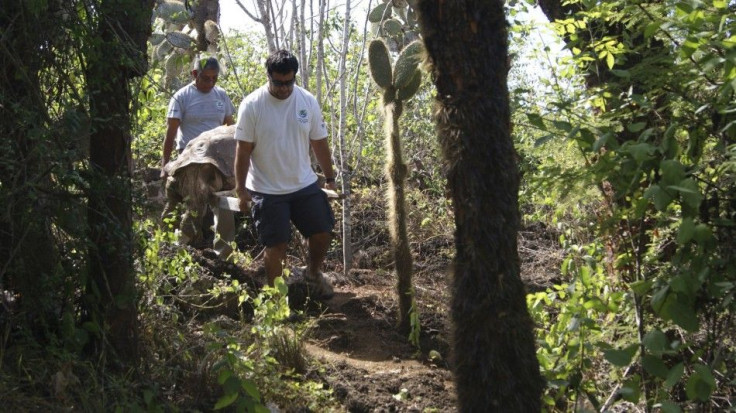10-Day Expedition Will Search For Relatives Of Extinct Galapagos Tortoises

KEY POINTS
- Experts will search for the relatives of two extinct Galapagos tortoise species
- They will search for tortoises suitable to begin a new Galapagos tortoise breeding program
- So far, four giant tortoise species in the Galapagos Islands have gone extinct
During a 10-day scientific expedition to the Galapagos islands, experts will search for relatives of two tortoise species believed to be extinct. Park rangers and scientists will explore Wolf Volcano on Isabela island in hopes of finding and removing giant tortoises related to the Pinta and Floreana species.
The reason why the team chose this location is that it is the area believed to be the place where pirates and whalers would leave some of the tortoises they had previously gathered so as to lighten their load.
With past studies showing that tortoises share up to 90 percent of extinct species’ genes, finding suitable tortoises could help begin a breeding program to repopulate the islands with tortoises once more.
Lonesome George
The troubles of the Galapagos Islands tortoises began with passing whalers and pirates who carried tortoises into their ships by the hundreds or even thousands for the purpose of being eaten. This decimated various tortoise populations including the Pinta and Floreana species and, for a long time, the Pinta tortoise species was thought to be extinct.
However, the last remaining specimen of the species was found wandering around the island in 1971 and was taken into captivity. Unfortunately, the tortoise dubbed as Lonesome George did not produce any offspring until his death in 2012.
Should the expedition prove successful, it is possible that the death of Lonesome George in 2012 may not be the total death of the Chelonoidis nigra abingdonii Pinta Island tortoise subspecies.
Galapagos Tortoises
Giant tortoises are the longest-lived of all vertebrates and Galapagos tortoises are some of the largest tortoises in the world. During the 17th, 18th and 19th centuries, it is believed that over a hundred thousand tortoises were killed off by pirates, whalers and merchantmen, while the creatures were also being threatened by non-native species taking their food supply and eggs.
As such, there are now only 11 giant tortoise species currently living on the Galapagos Islands, with four already being declared extinct since Charles Darwin’s arrival in 1835.
Today, many of the remaining species are considered endangered or threatened and have been under the protection of the Ecuadorian government since the 1970s. Although no purebred tortoises have been found, hybrid ones can help repopulate the Galapagos Islands tortoises.
© Copyright IBTimes 2025. All rights reserved.






















